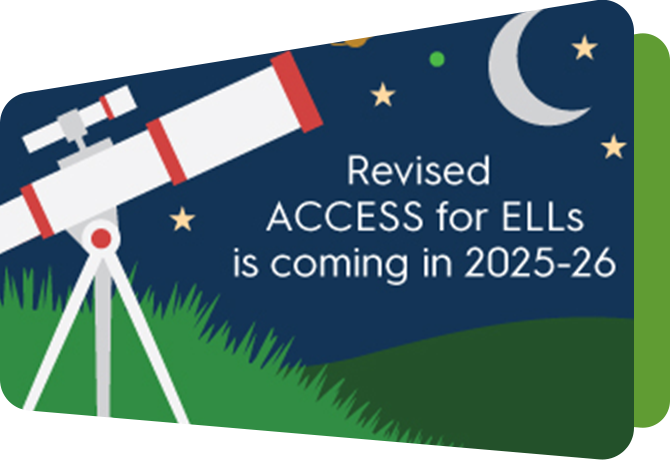May 2019 Featured Educator: Sinead Mayo
Tell us about your teaching experience and your current role.
I teach students in Grades K through 2, at a public elementary school. I have taught for 24 years, first as a classroom teacher in first and second grades, then as a Reading Recovery teacher. For the last 11 years, I have been in my current role as an ESL teacher.
Describe your current school and tell us a bit about what language services are like there.
Durham Public Schools is a large urban and suburban district. As a magnet school, my school draws about 500 students from across the district, 108 of whom are classified as Limited English Proficient. Overall, our school’s population is about 40% Latino, 30% African American, and 30% Caucasian. About 70% of our students qualify for free and reduced-price lunch. There are two ESL teachers at the school. We both provide a mixture of inclusion and pull-out services with small groups of students. The service delivery model depends on the needs of our students.
Why did you choose to become an educator? What do you love about your job? What frustrates you?
I am moved to improve the life outcomes of students who struggle with academics, whether their struggles originate from second language proficiency, socio-economic disadvantages, intellectual challenges, or other factors. I love to witness the look of pride and satisfaction when a child grasps a formerly tricky skill or concept. I wish I had the time in my schedule to work one-on-one with students with the most significant learning challenges.
What is your approach towards supporting language learning in your classroom and school? Are certain WIDA tools helpful?
My general approach is to address content and ESL goals via project-based learning whenever possible. For example, we have raised tadpoles as they morphed into frogs, planted seeds and tended a class garden plot, and made feeders for hungry winter birds. These and other projects offer high-interest vehicles to teach the use and understanding of academic vocabulary in speaking and writing, math, science, reading, and much more. There are several WIDA tools that help. Rubrics for speaking and writing help me to plan and track progress, while the kid-friendly versions allow students to assess their own progress, and reinforce clarity and sentence structure. Can Do Descriptors are useful to ESL teachers for planning, too. But even more importantly, they offer the perfect format for sharing invaluable information with classroom teachers about their ELs. They learn what they might expect of their students and how best to support them in the regular classroom.
How do you encourage students to learn? How do you accelerate their language development and ensure their equitable access to content learning?
I meet students where they are and design/plan lessons and tasks to help them move at their own pace toward proficiency. I intentionally build writing and speaking tasks into all lessons, as these are the areas of highest need for most of my students. I collaborate with classroom teachers to provide scaffolds, to be used in both settings, to allow my students to access content. Teaching with projects and hands-on activities is a powerful motivator for students.
Let’s talk about the WIDA English Language Development Standards. How do you determine which language standard(s) to focus on in a lesson? How do you manage to collaborate with content area teachers?
Between weekly meetings of content/classroom teachers with ESL and other resource teachers and on-going face-to-face and email contact, I am aware of the current content objectives in every class for which I serve students. From this starting point, I choose the most appropriate language objectives to address, strategies to utilize, and supports my students will need to access the curriculum in the regular classroom. Classroom teachers at my school are eager to maintain our communication, recognizing that the result will be better outcomes for our students.
What benefits do language learners and their families bring to your school and community?
English learners share their cultures and enthusiasm for learning with the wider school community. Students are proud of their dual-language abilities. The vast majority of my students’ parents are very supportive of their children and teachers. They are eager to know how they can help their children at home, given their often-limited English. Parents’ high levels of attendance at school functions and parent conferences and school functions attests to their involvement and desire to support their students.
What methods or tools do you use to assess your students' language learning?
As ACCESS results are only yearly, and are received several months after administration, ESL teachers must use on-going assessments, such as running records, anecdotal notes, teacher-created charts to track progress with specific skills, and continual observation to assess our students’ language learning. Based on this data, I can target instruction at students’ current needs.
How has WIDA helped you achieve your goals as an educator?
The resources on the WIDA website have provided much information for me to use and to share with content teachers. The WIDA Can Do Descriptors and writing and speaking rubrics are invaluable for ESL and classroom teachers, as mentioned previously. In addition to planning, I use WIDA’s kid-friendly rubrics for writing and speaking with students, as a self-assessment tool, encouraging students to take responsibility for their own learning, which is a key factor in student motivation. The information, samples and practice items for ACCESS allow me to prepare my students to do their best on this measure.





